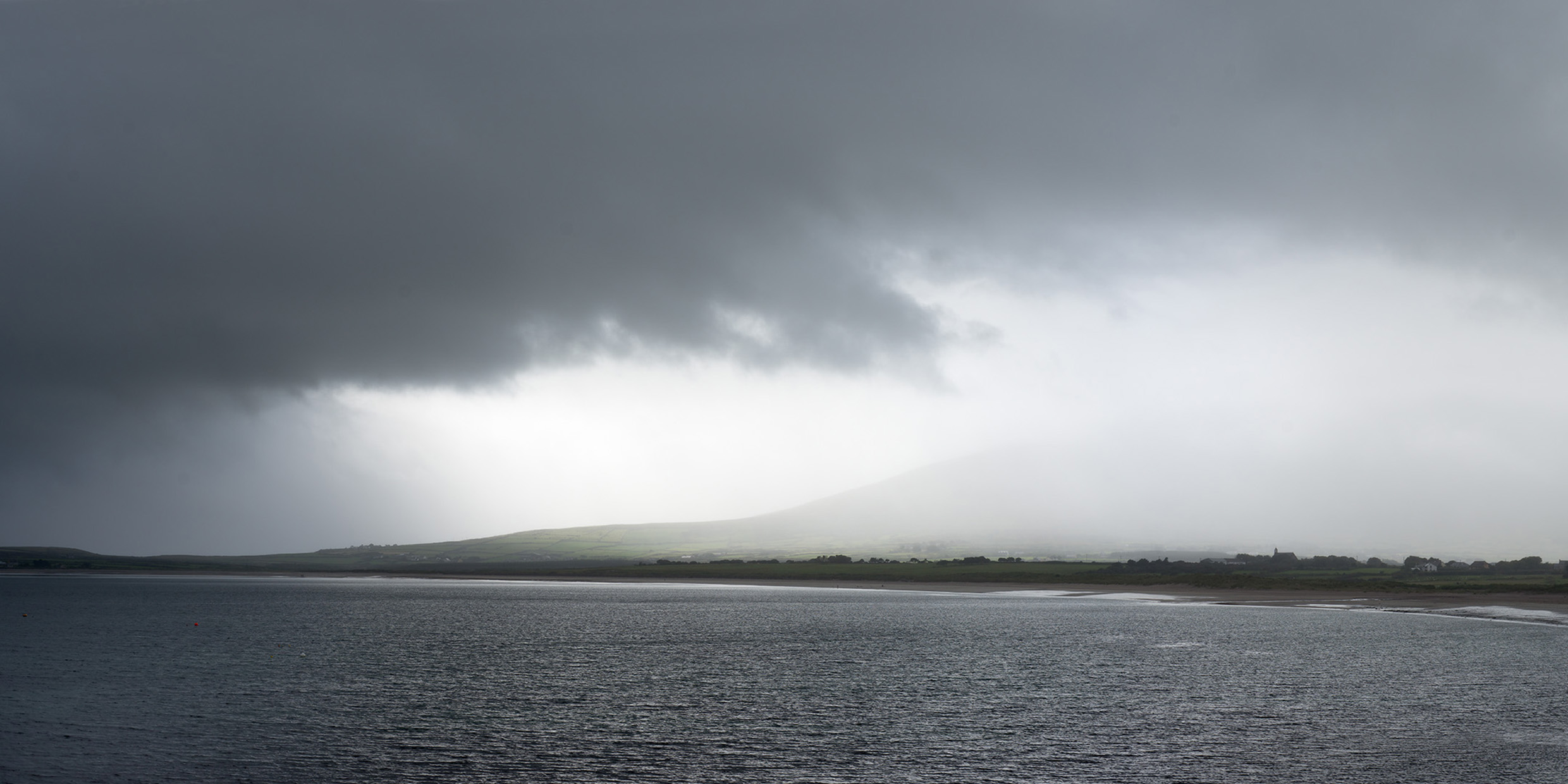Originally published 11 September 2001
COUNTY KERRY, Ireland — Years ago, when the big drill rig arrived here to dig our well, the operator jumped out of the cab and marched around with a forked twig, looking for the best place to drill. It’s a good thing his stick twitched where it did, because that was the only place in our tight little yard to which his rig could maneuver. And, sure enough, he hadn’t drilled very deeply when water came gushing up out of the ground.
A confirmation of the art of dowsing? Not likely. There’s probably no place in Kerry you could drill a hole and not hit water.
In fact, you hardly need to drill a hole.
Water is everywhere in this waterlogged place. It laps the shore. It squishes up in fields and bogs. It sheets down mountainsides. As I write, I’m looking out the window into a mist so thick you could cut it with a knife.
It’s all that water that keeps this place so verdantly green.
Water is so uniquely favorable to life, it is hard to imagine life without it. Perhaps the most unusual quality of water is that it is a liquid at moderate temperatures. Most other substances consisting of similarly small molecules — such as methane, ammonia, and hydrogen sulfide — are gases. Liquid water is an excellent solvent that bathes living cells in nutrient-rich solutions, transports substances within cells, and flushes away toxic wastes.
At the same time, water doesn’t dissolve calcium phosphate, which is why our bones don’t melt away. Of all liquids, water has one of the highest surface tensions, which allows capillary action to lift water up through the fibers of plants.
Where did it come from, this planetary wrap of fluid?
Water is composed of two more basic substances — hydrogen and oxygen — and we think we know where those elements came from. The hydrogen was apparently created in the Big Bang 15 billion years ago; the oxygen was forged in the violence of exploding stars that lived and died before the Earth was born.
What remains to be discovered is how and where the hydrogen and oxygen were forced together to create the quintillions of tons of life-giving substance that covers the surface of our planet like a silvery sheath — and hangs in the air outside my window.
A standard story is that the heat of the young Earth drove hydrogen and oxygen out of chemical combination in minerals like mica, which then combined to form water. Four billion years ago the planet was mostly molten, heated by radioactivity and the violence of its formation — a vast spherical volcano — and the newly formed water bubbled up out of the fiery depths as steam. Later, as the planet cooled, the Earth’s shroud of gaseous moisture precipitated as rain, which collected in the broad, deep hollows of the newly-formed crust.
As the chemist P. W. Atkins said of this scenario: “Our oceans were once our rocks.”
Another possibility is that the water was already there in the gassy nebula out of which the solar system formed. Not so long ago, a team of astronomers using the Earth-orbiting Infrared Space Observatory discovered what appears to be a massive water generator in a gas cloud near the Great Orion Nebula, 1,500 light-years away, the largest concentration of water ever seen outside of our solar system.
Like most interstellar gas clouds, the nebula in Orion is mostly hydrogen, but it also contains free oxygen. A hot young star embedded in the nebula spews off powerful shockwaves that pummel and heat the nebula, causing oxygen to combine with hydrogen, creating enough water every single day to fill the Earth’s oceans 60 times over. Eventually the water vapor in the nebula will cool and freeze into small particles of ice, and particles such as these may have been present within the nebula that gave birth to our solar system formed 5 billion years ago.
So, was our water made locally, or in ancient starry nebulas? Isotopes of the two elements may hold the answer.
An ordinary hydrogen atom has a single proton for its nucleus. Deuterium has a proton and a neutron. These two isotopes of hydrogen are chemically identical when they combine with oxygen to form water. In the waters of Earth, ordinary hydrogen is about 6,700 times more abundant than deuterium.
It would be good to know the isotopic ratios of hydrogen in those distant watery nebulas, and in the various components of the solar system. The ratios have been determined for meteorites, comets, Martian rocks, and atmosphere, Jupiter, Saturn, and the sun. So far, the only place chemists have found an isotopic ratio identical to Earth’s oceans is in water-bearing meteorites, which are believed to represent the primeval material out of which the Earth was born.
If our oceans arrived with meteoric impacts during Earth’s formation, then the mist outside my window, so essential to life on Earth, had its source in some other part of the cosmos. Even the sogginess of this soft, soft Irish day connects me to the universe.



